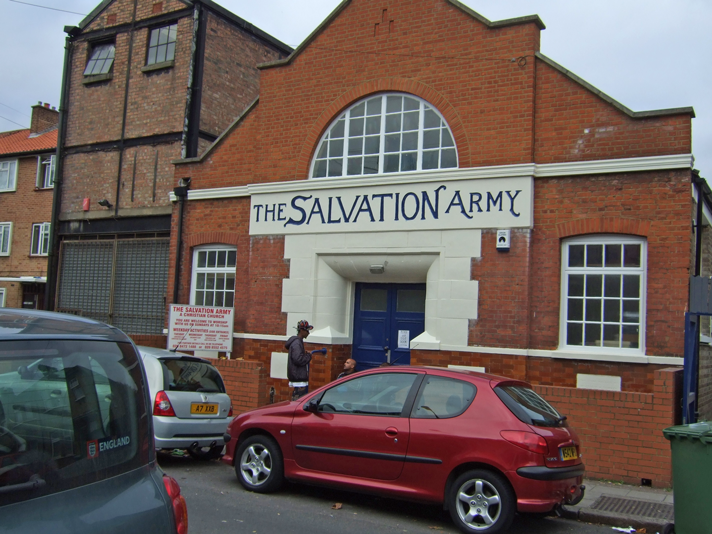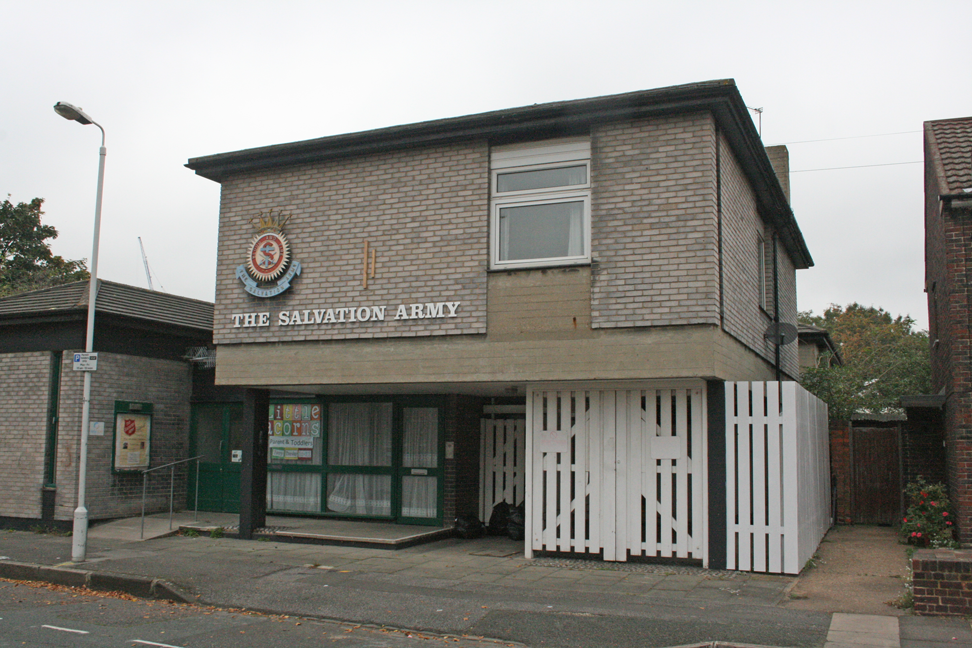The Salvation Army
Soon after the Salvation Army, originally ‘The Christian Mission to the Heathen of our own Country’ began in nearby Whitechapel under General William Booth in 1865 the bands and uniforms were seen and heard in Stratford. The military-style organisation, public presence, women and men in leadership, flags flying, ‘in your face’ evangelism, direct preaching, open-air singing, concern for the ‘down and outs’ disturbed the streets and shocked the church-goers.
The Stratford Express made comments about the initial shock, the expansion and then the welcome acceptance of their work.
‘various parts of Essex have been incommoded during 1880 by the operations of the Salvation Army, a religious body whose proceedings are marked more by enthusiasm than prudence’ - 01.01.1881
‘Canning Town was taken by storm on Tuesday when the Salvation Army flooded the district with its battalions, and drowned the noise of traffic with its drums. Brigadiers, Colonels, Captains and Privates were everywhere. The main street had a fringe of red--banded peak-caps and coal scuttle bonnets; the great public hall was crowded with zealous, strong-lunged warriors were every where’ - 19.01.1901
‘if the Salvation Army could help to save the Borough from Sabbath-breaking, wife-beating, drunkenness and other evils, what a great work they are doing’. - 15.03.1902

Across Newham bands marched, the magazine War Cry was distributed in pubs, halls were hired, open-air services spread, uniforms were seen in the streets and the work expanded By 1901 the Stratford Corps in Angel Lane, established in 1883, had nearly 1000 soldiers.
The Salvation Army has had 25 halls, citadels or temples across Newham as centres for evangelism or social care. You could find them in Canning Town in Bradley Street, off the Beckton Road until 1964. Custom House had halls in Coolfin Road [burnt down in 1940], Prince Regents Lane, Woodstock Street, and Ashburton Road. Silvertown had a hall in Park Street until 1961 and premises in Oriental Road and Victoria Dock Road. Plaistow had the Upper Road building from 1875-you can still see the abandoned building.

Stratford had the strongest corps in Angel Lane but was replaced in 1965 by the Goodwill Community Centre in Paul Street E15. East Ham had the Wakefield Street building from 1908 but work in Katherine, Crescent and Plashet Roads had all ceased by 1928. Manor Park had the Snowshill Road E12 Community Centre off Church Road until the late 1990s but the Carlyle Road hall had closed by 1920.
In 1994 the Newham Directory of Religious Groups noted the leadership [women Captains and Majors] and the number of members and activities in each Salvation Army Centre A total of 84 members.were then divided between Manor Park 10, Stratford 50 and East Ham 24 Activities still continued with Adventurers, Youth Club, Home League, Over 60s, Luncheon Club, Playgroup in Manor Park; Luncheons for Elderly, Childrens Club, Over 60s, Sunday School at Stratford and Luncheon Club, Ladies Fellowship, Clubs on the East Ham programme.
There are only 2 local centres left with East Ham in Wakefield Street E6 and the Stratford Goodwill Community Centre in Paul Street E15 (pictured).
There was a Salvation Army Counselling Service in Water Lane E15 but the bands have merged to create the Aveley and Newham band. And outside the Wakefield Street E6 centre is the sign Salvation Army and Christian Church- a reminder that the SA is still around as a Christian Church in multi-faith Newham.
